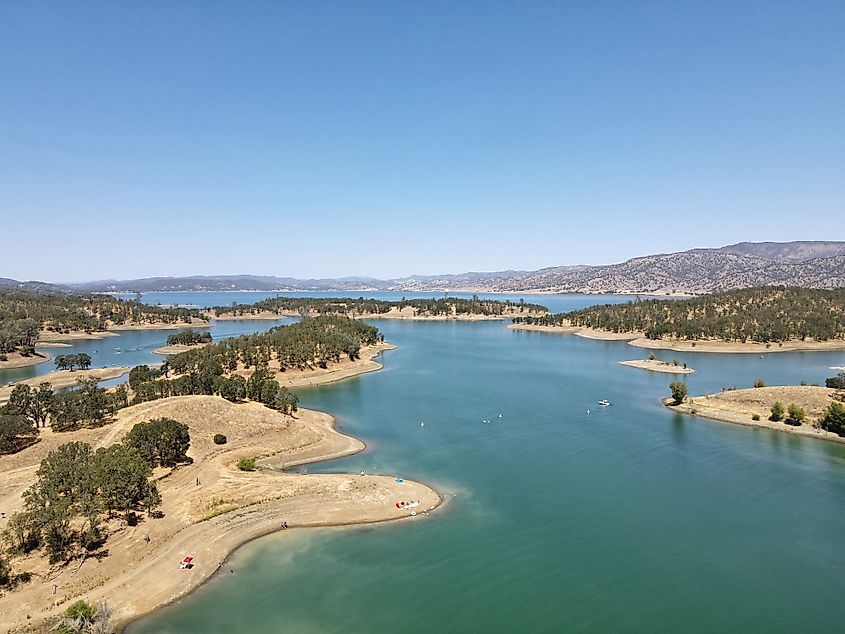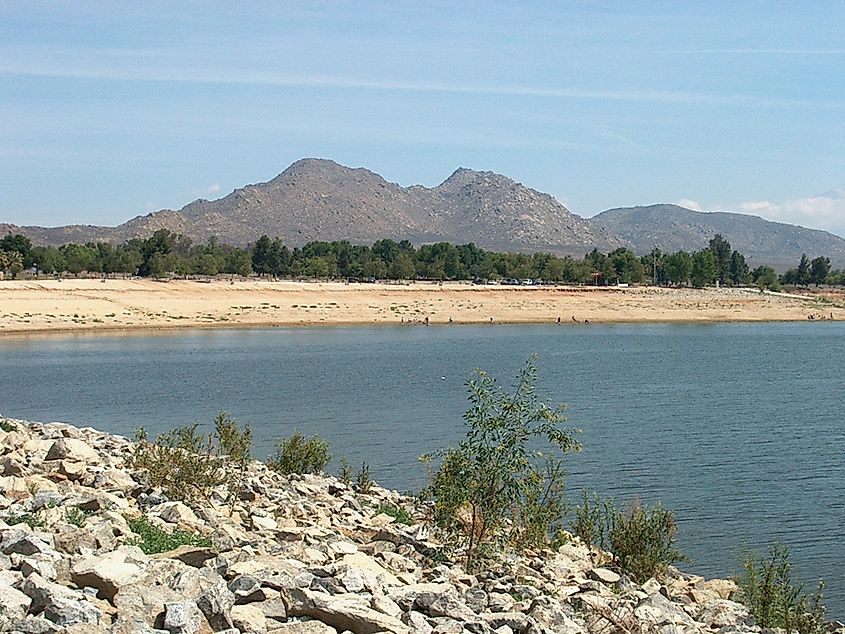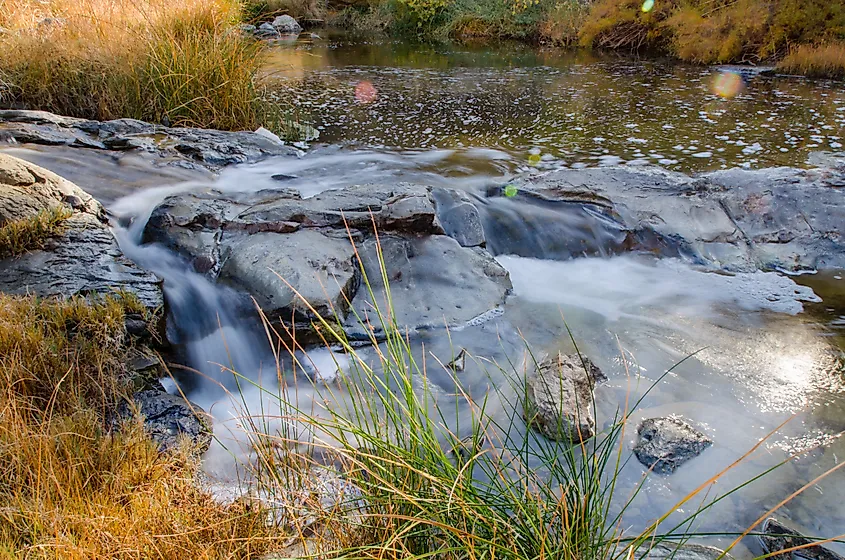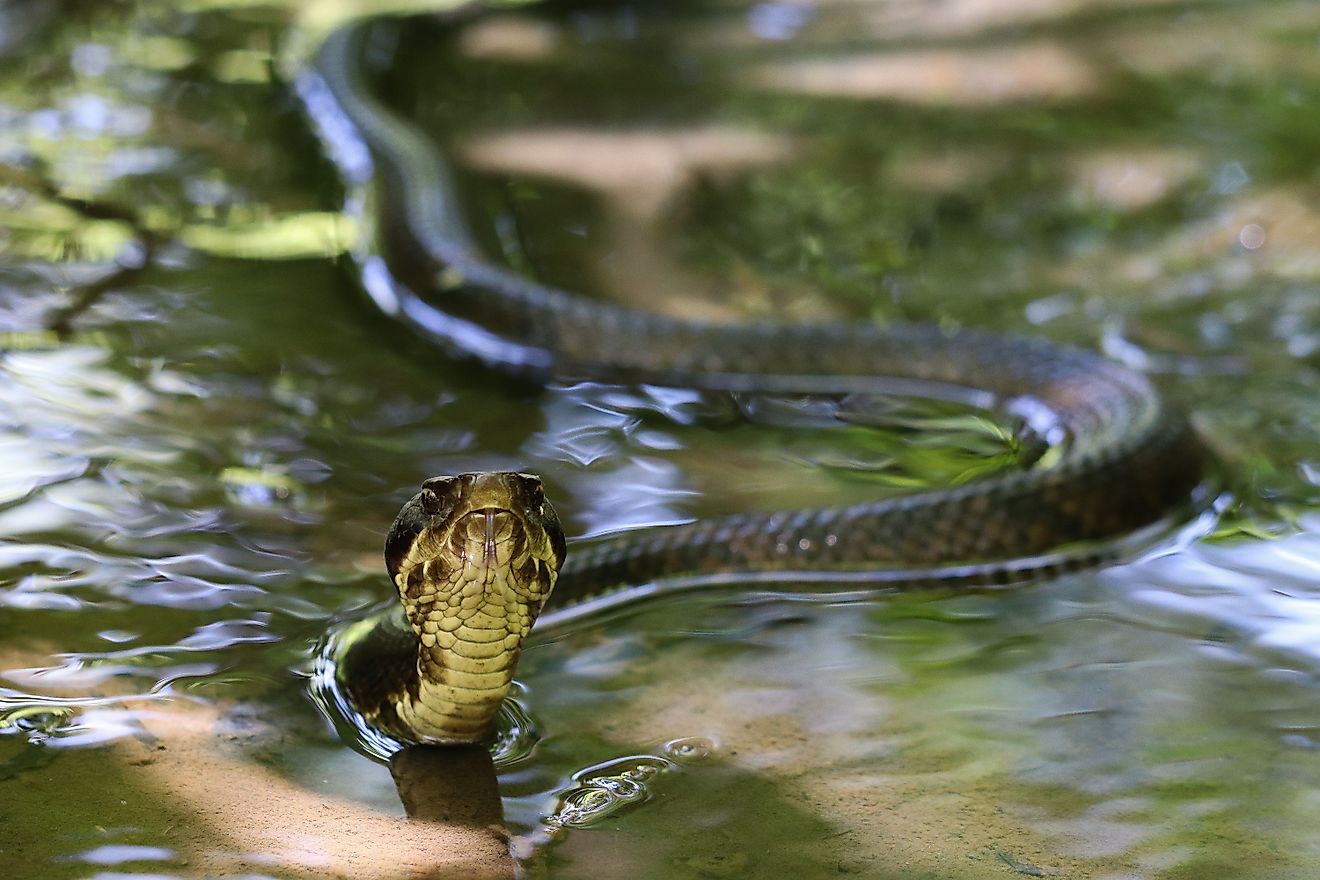
5 Most Snake-Filled Bodies Of Water In California
California boasts one of the most diverse landscapes in the United States, including just about anything, from forests and snowcapped mountains to beaches and deserts. It's also home to a surprising number of lakes, rivers, wetlands, and other bodies of water.
From foothill reservoirs to coastal deltas, certain watery areas here consistently and notably record high levels of snake activity. This is due to their climate, food sources, vegetation, and proximity to a variety of wildland habitats. While most native snakes in California are nonvenomous, a few areas also see regular encounters with venomous species like rattlesnakes!
Today, we will highlight some of the most snake-infested waters in the Golden State, where you can set out to see, or avoid, these slithery reptiles in the wild.
Folsom Lake

Folsom Lake, which rests just northeast of Sacramento, is frequently cited for its snake populations, with its combination of warm shallows, rocky shoreline, and vegetation that make perfect homes for these reptiles.
More specifically located within the Sierra Nevada foothills, the reservoir supports a habitat favorable to several snake species of Northern California, including gopher snakes, racers, and the Northern Pacific rattlesnake (also known as Western rattlesnakes), the latter of which are the area's only native venomous species.
Sightings tend to rise in late spring and summer, particularly along the lake’s more secluded eastern coves and trails near Browns Ravine and Beals Point. The abundance of rodents and smaller amphibians in the area also contributes to its appeal for snakes, keeping them well fed throughout the year.
While fatalities are rare, multiple bites have been reported over the years, generally due to accidental encounters on various hiking trails or while swimming near shorelines. Note that snake activity is most intense here between May and September.
Lake Berryessa

Lake Berryessa in Napa County is one of the largest reservoirs in California, and also one of the most snake-active portions of the state. Its jagged shoreline, lush woodlands, and rocky outcrops provide an array of hiding spots for both nonvenomous and venomous species, particularly Western rattlesnakes.
Other common species in and around the lake include gopher snake, aquatic garter snakes, ringnecks, Western yellow-bellied racers, California kingsnake, and other land-based species of garters. Encounters are most common from late spring through early fall, especially on the network of foot trails near the more undeveloped nearby areas and connecting waterways around the lake, like Pope Creek to the west and Putah Creek to the east.
While most snakes that call Berryessa home avoid human activity, Western rattlesnakes have been spotted near campsites, picnic areas, and even swimming in shallow water. Emergency services in the region have responded to multiple bite incidents, typically involving off-trail hikers or swimmers entering brushy zones.
Stay safe in this somewhat snake-infested lake and use caution when stepping over logs or rocks, and never reach blindly into crevices near the water’s edge.
Perris Reservoir

Located in Riverside County, Perris Reservoir (also called Lake Perris) sits in an area that sees a long dry season, making it an oasis for all sorts of creatures in Southern California. The Southern Pacific rattlesnake is frequently encountered, being one few venomous species to be found here. They are commonly seen near Bernasconi Beach, the Ya’i Heki’ Regional Indian Museum trails, and along the reservoir’s southeastern perimeter.
With the highly popular Lake Perris State Recreation Area connected to this body of water, park rangers regularly issue advisories in peak activity months, especially from April through October. Nonvenomous species such as king snakes and gopher snakes are also widespread, but are often mistaken for rattlesnakes, too.
It is recommended you avoid walking through dense grasses, stick to designated trails, and check beneath picnic tables and campsites before settling in for the evening. Also, remember that with SoCal's notorious daytime heat, snake presence is highest at Perris Reservoir in the early morning and late afternoon.
Cache Creek

Cache Creek, stretching from Clear Lake down to the town of Woodland, is one of the most snake-prone waterways in Northern California. Its slow-moving current, abundant plantlife, and boulder-filled waterline along the way create an idyllic setting for all kinds of reptiles, particularly during the dry season when water sources elsewhere are scarce.
The area supports a range of native snakes, including garter snakes, gopher snakes, and, like many other parts of NorCal, a high concentration of Northern Pacific rattlesnakes. If you are wary of rattlesnakes, they are most often spotted along gravel bars, under driftwood, and in shaded crevices near the water’s edge.
Kayakers and anglers should definitely be on the lookout, especially in the upper reaches near Clear Lake and in the Cache Creek Wilderness area.
Sacramento-San Joaquin Delta

The Sacramento-San Joaquin Delta spans over 700 miles of waterways and sloughs, and is easily one of the most biologically diverse wetland systems in California. This complexity also makes it a major zone for snakes, of course.
The dense tule reeds, overgrown levees, warm shallow inlets, and other unique features provide ample habitat for several species, including common garter snakes and the Northern Pacific rattlesnake. As usual, snake sightings are particularly frequent in areas with less human development, such as along Snodgrass Slough, the Mokelumne River, and isolated sections of Sherman Island.
Two other common sights here are anglers and waterfowl hunters, two groups who are the most likely to run into a snake or two during their day, so be sure to follow safety precautions during your next day out here.
Know Where to Find California's Snakes
Snakes are clearly a vital part of California’s ecosystems, with some regions of the state carrying a higher risk for unexpected encounters with the predatory reptiles. Understanding where and when these snakes are most active can help you make an informed decision about how you interact with the environment, especially in areas where they love to bask or hide.
Whether hiking, swimming, hunting, or fishing, simple precautions, like avoiding tall grass and watching where you step, can reduce the chance of a potentially dangerous interaction. Furthermore, respecting these habitats not only ensures your safety but also supports the delicate balance of the wildlife in America's most populous state.











